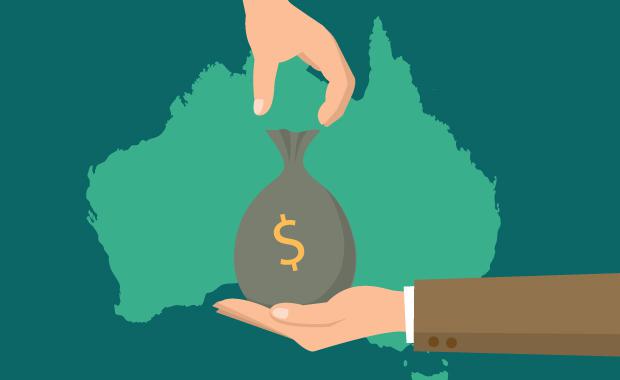1. Superannuation
- Members of regulated superannuation funds will not have to meet the work test after 1 July 2020
if they are 65 or 66 years of age. Under the bring-forward rules, individuals meeting the age
requirement can make three years’ worth of non-concessional superannuation contributions (i.e.
after-tax contributions), thereby contributing up to $300,000 in a single year, with no further non concessional contributions for the following two years - The restrictions on claiming the spouse contribution tax offset will be eased from 1 July 2020,
giving 70 to 74 years old spouses eligibility - The calculation of exempt current pension income will be simplified for superannuation funds
from 1 July 2020, allowing a preferred method of calculation and removal of some actuarial
certificates - Transitional tax relief for merging superannuation funds will become permanent from 1 July 2020
- SuperStream will be expanded from 30 March 2021 to include electronic ATO requests for release
of superannuation funds and SMSF rollovers - An expression of interest process will be undertaken to identify options to support establishment
of a Superannuation Consumer Advocate
2. Financial Planning
- The budget has been projected to be in surplus from 2019/20 and the tax breaks will mean low
and middle-income workers earning between $48,000 and $90,000 will be eligible to receive
$1,080 on top of tax relief they received last year through an extension of the Low- and MiddleIncome Tax Offset - The notable increase in the age limit for spouse contributions to super from 69 years to 74 years
will be of advantage to women. At present, people aged 70 and over cannot receive third-party
contributions - Flexibility will be provided from July 2020 for people aged 65 and 66 to contribute to super
without meeting the work test of 40 hours over a 30-day period. This will greatly assist
Australians in preparing for the upcoming rise in age pension eligibility to 67 from 2020-21 - The Government will provide $282.4 million over 5 years from 2018-19 for the release of an
additional 10,000 home care packages across the 4 package levels. The Treasurer said this will
bring to 40,000 the number of new packages announced over the last 18 months. The Government
is also providing a $320 million general subsidy boost in 2018-19 for residential aged care and
13,500 new residential care places
3. Individuals
- The Medicare levy low-income thresholds for singles, families, seniors and pensioners will be
increased from the 2018-19 income year.
[table id=1 /]
- Payments to primary producers in the Fassifern Valley, Queensland affected by storm damage in
October 2018 will be treated as exempt income - The HELP debt incurred for recognized teaching qualifications after teachers have been placed in
very remote locations of Australia for four years (or part-time equivalent) will be extinguished.
Indexation on HELP debts of all teachers while they are placed in very remote locations will no
longer accrue from 14 February 2019. - Lowering the 32.5% tax rate to 30% from 1 July 2024. This will cover all taxpayers earning
between $45,000 and $200,000 and will mean that 94% of taxpayers will pay no more than 30
cents in the dollar - The low and middle-income tax offset (LMITO) will be changed such that the reduction in tax it
provides will increase from a maximum amount of $530 to $1080 per annum, and the base
amount will increase from $200 to $255 per annum for the 2018-19 to 2021-22 income years - From 1 July 2022, the Low-Income Tax Offset (LITO) will be increased to $700 (from $645). The
increased LITO will be withdrawn at a rate of 5 cents per dollar between taxable incomes of
$37,500 and $45,000 (instead of at 6.5 cents per dollar between taxable incomes of $37,000 and
$41,000 as legislated under the Plan). The LITO will then be withdrawn at a rate of 1.5 cents per
dollar between taxable incomes of $45,000 and $66,667. - Summary of changes to Personal Income Tax rates and thresholds:
[table id=2 /]
- From 1 July 2019, net income generated from the forced sale of livestock will be exempted from
Farm Household Allowance (FHA) payment assessment, when that income is invested into a farm
management deposit. The measure is to ensure that FHA recipients who are destocking retain
access to income support and are able to make long-term financial plans for their future.
4. Companies
- The instant asset write-off threshold for businesses with an aggregated turnover of less than $10
million will be increased to $30,000 for eligible assets that are first used, or installed ready for
use, from 7:30pm (AEDT) on 2 April 2019 to 30 June 2020 - Businesses with an aggregated turnover of $10 million or more but less than $50 million will be
able to immediately deduct purchases of eligible assets costing less than $30,000 that are first
used, or installed ready for use, from 7:30pm (AEDT) on 2 April 2019 to 30 June 2020 - The changes proposed to the instant asset write-off thresholds are listed in the table below:
[table id=3 /]
- For vehicles acquired on or after 1 July 2019, eligible primary producers and tourism operators
will be able to apply for a refund of any luxury car tax paid, up to a maximum of $10,000 - The Government will defer the start date of the previously announced amendments to Division
7A by 12 months to 1 July 2020.
About Carisma Solutions
For the last 13 years Carisma has been offering 360* accounting services to accounting firms in Australia & New Zealand. with a distinguished accounting pedigree, Carisma operates with the depth of an institutional player and yet is nimble as a startup. Our 360* service and extended team model is are delivered by world-class accounting professionals & software with passion to enable and delight accounting firms. You can reach us at biz@carisma-solutions.com.au




